BLOG
|
|
ONE DAY, ONE SMALL SEGMENT AT A TIME APPROACH TO A BIG GOAL “Why Chip Gaines Is Starting Small as He Trains for His First Marathon” by Faith Brar for SHAPE.com is subtitled, “Every day of training…is something to be proud of…because I’m making it happen”. There’s been a fair amount of buzz generated by the “Fixer Upper” star’s announcement of his intent to run a marathon. Anyone who has watched the show is familiar with this loveable guy’s easygoing approach to remodeling homes with his designer partner wife, Joanna. So, it’s not a huge surprise that his training program would not be on the extreme side of intense.
According to Brar’s report of Gaines’ recent blog post, he will be working toward the 26.2 mile distance achievement in small incremental increases of 0.2 miles. He explains that “for every run on my training schedule, I’ll be tacking on that extra.2-kind of a catalyst to remind me that it all starts with the small stuff.” For anyone training to finish a race distance longer than they have previously attempted, Gaines might be someone to follow in the next months for inspiration. He is quoted further as saying “I have to remember that no matter what, I can always run .2 further than I think I can. And when race day comes, all I’ll be focused on is that first .2, then the next, and so on.” Love his perspective! Thanks to Faith Brar for emphasizing this aspect of Chip Gaines’ training; it’s a philosophy that some might wish to embrace when taking on other challenges. RUN & MOVE HAPPY https://www.shape.com/celebrities/celebrity-workouts/chip-gaines-training-his-first-marathon https://magnoliamarket.com/training-log-first-run/ https://www.runnersworld.com/celebrity-runners/chip-gaines-is-running-a-marathon-with-help-from-runnings-most-inspirational-pro
1 Comment
Kristina LaRue RD, CSSD, LDN provides a rundown on “8 Trends to Know About in 2018” in an article for the MyFitnessPal.com blog. The experts referenced in LaRue’s piece provide some cautionary comments.
1. Activated charcoal: jet black ganules; can interfere with food and medication absorption. Earned Runs: an article in SHAPE.com discusses at length toothpaste made with this material; it can be too abrasive, not include or deactivate fluoride, and is not best for whitening. https://www.shape.com/lifestyle/beauty-style/does-activated-charcoal-toothpaste-really-whiten-teeth 2. Matcha: anti-oxidant laden, powdered green tea with good amount of caffeine. Earned Runs: Cautions include possibility of ingesting too much lead over time, as actual leaves are in drinks or foods. https://www.huffingtonpost.com/2015/04/05/what-is-matcha_n_6988710.html 3. Kombucha: fermented sweetened bubbly tea that contains some alcohol; reason some may wish to avoid. Earned Runs: Making kombucha involves use of bacteria, usually of the type considered to be probiotic, “but if not prepared properly, the drink can grow harmful bacteria or mold”. There’s also a caution that it is high in sugar and caffeine https://www.webmd.com/food-recipes/news/20160125/kombucha-tea-is-it-safe 4. Tumeric teas and lattes: spice obtained from a root; bright yellow powder is major component of curry; contains curcumin, the ingredient that has reported health benefits. Earned Runs: as with any supplement it can interact with some medications. Reported side effects include gallbladder contractions, nausea and diarrhea. Curcumin in it isn’t well absorbed; taking it with a component of black pepper (piperine) or fat/oil improves absorption. https://www.webmd.com/food-recipes/news/20171213/is-spice-rack-staple-turmeric-a-health-star? 5. Collagen: colorless, odorless protein powder derived from animals or fish. Earned Runs: has been considered low quality/incomplete protein; doesn’t contain all essential amino acids. Some studies show health benefits {the few studies I reviewed compared collagen supplementation with no protein supplementation, not with other protein sources. Not sure benefits are specific to collagen or any protein). Caution: allergic reactions, high calcium intake. https://www.healthline.com/nutrition/gelatin-benefits https://www.livestrong.com/article/325664-side-effects-of-taking-collagen-supplements/ 6. Plant based dairy alternatives; Plant based milks contain sugars; care must be taken. Earned Runs: all milks are not equal to cow’s milk or each other in nutrients, and all will require sugar for sweetening. Calcium is most important component which may be deficient http://www.huffingtonpost.co.uk/entry/nutritional-value-of-plant-based-milk-alternatives-soya-hemp-oat-almond-coconut_uk_58ee2724e4b0ca64d91ad750 7. Moringa: anti-oxidant- and iron-rich ‘super powder’ taken as a tea or used as powder. Earned Runs: leaves are safe but seeds, stems, and root are toxic to humans. Caution is urged. http://www.huffingtonpost.ca/2015/10/08/moringa-benefits_n_8263868.html https://www.webmd.com/vitamins-supplements/ingredientmono-1242-moringa.aspx?activeingredientid=1242 8. Mindfulness: mind body focus when it comes to eating. Earned Runs: think before you just eat; there are many experts and centers that offer advice to avoid binges. http://www.nytimes.com/2012/02/08/dining/mindful-eating-as-food-for-thought.html Summary Other than mindful eating trend, the other 7 trends involve ingestion of specific foods. The promised health benefits of each have not been supported by medical research. This fact does not indicate those benefits don’t exist. However, it just reminds us that moderation is the best approach to intake. If a small amount of a food is good, more is not necessarily better, and potentially may be harmful. The substance itself may be safe but accompanying ingredients, methods of processing, or food / drug interactions, may cause concerns. Substitution with other essential foods may present a problem as well. However, it’s exciting to know that new foods may be found that potentially will enhance health, some of which are actually time-tested old world remedies. RUN & MOVE HAPPY! http://blog.myfitnesspal.com/8-trends-know-2018 ROUGHLY 4 MONTHS AFTER THE 2ND EPIC WALK, the leaders and founders of Everwalk appear to be re-energized in 2018 and have some new events in the works. A newsletter email informed me that, following the September 2017 Epic Walk New England, EverWalk is busy planning 3rd and 4th Epic Walks. Possibly from Vancouver to Seattle, and Philadelphia to New York City, that will cover “140-150 total miles”, over 7 days.
There’s also an announcement of the upcoming formation of a 110.86mile Club. The short blurb indicates walkers will be rewarded each time they cover this distance in one month. The significance of this mile number was not revealed, but since the website is re-launching in April, look for more information then. Another event that might make a walking adventure available to many, many walkers across the country is 2022: The Yearlong Epic. The website explains that the “plan in 2022 is for Diana and Bonnie to lead a 20-mile EverWalk in all 50 states, every Saturday a different state. 50 walks in 50 weeks. There is much to organize before 2022. Stay tuned.” These are events which families and friends can anticipate and then participate! Now is the time to at least consider becoming involved. Do you remember the Solar Eclipse on August 21, 2017? Were you scrambling to find protective eyewear to make safe viewing possible? Did you regret not making plans to travel to the “path of totality”? Epic Walks are not even close to representing the same level of life-changing experience. But lessons learned about advance preparation for last summer’s total eclipse might serve to motivate planning for future movements that could generate regret for not joining. Once excitement peaks, the opportunity to participate is greatly diminished. The Summer Olympics in Los Angeles 2028 is certainly in the category of lifetime dream experiences! In Paris in 2024, in Tokyo in 2020, and the 2022 Winter Olympics in Beijing. It’s winter, and the blahs can catch up to us. Take a bit of time now to dream about these fun future events and who might participate with you. Epic Walks are to be planned in various other cities in upcoming years. It’s best to sign up for alerts now to stay informed, if the scope of such undertakings appeals to you. RUN & MOVE HAPPY! www.everwalk.com 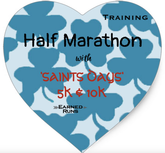 WEEK 3 HALF MARATHON 2018 with SAINTS DAYS 5k and 10K Training Plan You may become more aware of the progress you are making in training after leaving January and entering February. If you feel comfortable with the schedule, and want to add a different type of workout, the Tuesday run might be used as a as a speed or hill workout. Speed: Run the first mile/10 minutes at an easy pace, about conversational speed. Run the middle 10-12 minutes in intervals of 2 minutes at higher intensity in which conversation would be more difficult, allowing speaking only in short phrases, followed by one minute easier. Four cycles would be about 12 minutes. Run the last 8 minutes easy. Cool down with a brisk 10-minute walk. Or, find another speed workout you like better. Hill: Alternately, run the middle segment intervals on a hill, with the run/up-walk/down cycle taking about 2-3 minutes. In cold weather, hill workouts can be convenient if you drive and park or are working/living near the “hill” (parking ramp or actual hill). There’s only a half mile distance to cover for the out-and-back for the first mile segment, somewhat less for the last segment, and the middle hill segment can be near to where you parked your car or left the building. Just think, the days are getting longer and you are getting stronger if you are incorporating the strength work into the week’s work and performing the dynamic warm-ups. RUN & MOVE HAPPY! Walkers: For another type of workout you can also change the Tuesday HIIT (High Intensity Interval Training) to a hill workout. Warmup for 10 minutes on a flat stretch, walk up then down on a hill that takes about 2 minutes to climb then 2 minutes to descend. Five cycles of uphill-downhill repeats will take about 20 minutes. You don't actually need a cool-down, so after the last downhill, you are finished! Both runner and walker plans (below) are also on the RESOURCES page: final_half_marathon_w_saints_days_2018_part_1_january_11.pdf walker_saints_days_5k___10k_2018_training_plan_draft_14_january.pdf QUICK TRAVEL WORKOUT Runners and other recreational athletes-in-training who hit the road for work might hope to book places to stay at destinations that have fitness centers. High-end hotels have such amenities and oftentimes also offer spa, pool, or even running track facilities. But if this level of comfort is not what is available for your trip, an affordable inn with a treadmill in a small room would be a welcome, if low end luxury. After working diligently to achieve a certain level of fitness or training, an upcoming 3-5 night stay away from home can appear to be a setback in the making if travelers must rely on themselves to secure needed exercise opportunities.
If new to strength training, overcoming uncertainty and inertia to start could have been the most difficult part of the process. A pause in schedule could slow precious momentum. Valetmag.com offers a solution to this problem with an in-room bodyweight workout consisting of a warm-up and 4 exercises: Burpees, triceps dips, decline push-ups, and overhead squats. Since it’s Saturday, if you’re on a trip, check out the demonstrations if you aren’t familiar with these moves. Perform the quick workout, and go exploring and sightseeing if possible! RUN AND MOVE HAPPY! http://www.valetmag.com/the-handbook/living/hotel-room-body-weight-exercises.php
TRAIL SHOE STUDY NEWS FOR WALKERS AND RUNNERS The results of a study published in the October 2017 issue of Journal of Sports Medicine and Physical Fitness by French researchers provides insights that might be helpful in the selection of athletic shoe type. It is the only project, in my recall anyway, in which runners and walkers were involved, the results applied to both groups, and the discussion detailed potential differences.
The researchers hypothesized that highly-cushioned maximalist shoes generated less thigh muscle oscillations (and less pain and injury risk) than minimalist shoes, which provided greater running economy. They sought to determine if wearing a thigh compression sleeve would lessen oscillations in minimalist shoe wearers. In other words, the scientists wondered if the experience of wearing a higher performing minimalist shoe could be improved comfort-wise WITH compression, to the level enjoyed by maximalist shoe wearers WITHOUT compression. The research protocol attempted to demonstrate whether wearing an elastic thigh compression sleeve would reduce the number of muscle oscillations (“vibrations generated by impacts with the ground”), measured in 2 of the quadriceps 4 major muscles, in walking and running athletes who wore minimalist versus maximalist shoes. Such oscillations had been tied to greater pain and injury rates in previous research studies. Details; the French scientists knew from previously reported research that:
Study design: Eleven healthy males were recruited for the study, with a mean age of 25 years and BMI of 22. Muscular oscillations were recorded on two thigh muscles used in trail work, the vastus medialis and rectus femoris. Participants performed 16 one-minute runs on a flat treadmill, in random order wearing maximalist or minimalist shoes, walking (up to a speed of 6 km or 3.7 miles per hour) or running (up to a speed of 10 km or 6.2 miles per hour), without or with compression sleeves*. Three different compression pressures were applied to the thigh using the sleeve (low, moderate, high). Thigh circumference determined compression sleeve size. The findings: 1) maximalist shoes significantly decreased muscular oscillations in thigh muscles during walking and running 2) sleeve compression significantly reduced oscillations in both types of shoe wearers 3) the greatest oscillation decrease occurred when compression pressure was highest 4) minimalist shoes with high compression reduced muscle oscillations as much as maximalist shoes with lower compression. Walking v running discussion: a) During walking, initial contact with the ground is made with the heel in both minimalist and maximalist shoes, according to a meta-analysis referenced by the study. Therefore, the decrease in oscillations in walkers wearing maximalist shoes was thought by the study researchers to be linked to lower impact at the heel due to cushioning by the thick sole. b) Point of initial contact with the ground in runners isn’t consistent, according to the same meta-analysis. Minimalist shoe wearing tends to move landing to mid-foot which decreases impact. There are other biomechanical adaptations that occur with minimalist shoes to reduce impact but the higher speed involved in running increases impact force and oscillations more than the helpful biomechanical changes decrease it. Therefore, maximalist shoe cushioning has a major role reducing oscillations in running just as they do in walking. Compression sleeves: reduce muscle oscillations whether worn on calf or thigh, which may be related to better muscle support and reduction in stride length. Earned Runs comment: The title of this research paper “Maximalist vs. minimalist shoes: Dose effect of elastic compression on muscular oscillations” by Jules Gellaerts and colleagues doesn’t indicate that the study was designed to help trail runners but the introduction provides this information. However, thigh muscle oscillations could not be measured if participants ran and walked over this type of terrain, so instead the work was performed on a flat treadmill in a laboratory setting. As a result, the good news for runners and walkers is that this study’s findings may pertain to both road and trail enthusiasts. Elastic compression in this study was applied via a thigh sleeve. Many runners wear calf sleeves. The discussion suggests both calf and thigh compression may have similar benefits, but in this study the results are only derived from the use of thigh compression. The researchers did not include participants who wore traditional shoes, which are neither maximalist or partial/fully minimalist. Women and older participants were not part of this study. Final impression: shoe selection remains a matter of preference for most runners and walkers. Studies like this one may help inform our choices especially when it comes to less traditional shoes, and the decision to wear compression gear. Over the long, non-professional athletic career many wish to enjoy, avoiding injury would seem to be an important goal. Perhaps the addition of compression gear may assist with remaining healthy. RUN & MOVE HAPPY! *CompresSport ForQuad Compression Sleeve (thigh); below is possible product used in the research study, available on amazon.com. https://www.ncbi.nlm.nih.gov/pubmed/28085121 The previous Science Friday blog post (January 12, 2018) featured research that indicated exercisers may receive more health benefits from endurance work if they had more lean muscle mass and less body fat. In lean individuals, endurance exercise 3 times per week was associated with a change in the intestinal microbiome that lead to increased gut production of protective substances called short-chain fatty acids (SCFA).
An article, “How to Lift Weights to Lose Weight”, by Cinnamon Janzer for Under Armor’s MyFitnessPal.com blog has helpful suggestions on how to start increasing lean muscle mass. Janzer’s piece focuses on weight loss, and the quoted expert, Bill Evans, explains how achieving a greater muscle mass allows sustained calorie burning because of a consequent increase in metabolic rate. The article reports that the expert’s research work with women showed only 2 days per week was required to see changes. Other reasons to strength train have been highlighted by Earned Runs training plans. Above all to be STRONGER!!! And to avoid injury while running, walking, cycling, etc. Evans makes a great point that previously weak individuals generally become more active because they CAN! Janzer’s advice: start anytime and workout at home. The article goes on to offer suggestions on how to strength train at home. Earned Runs take: one of the advantages of starting strength training at home is that it allows working with lower weights and increasing weights in smaller increments. Many gyms will have several sets of 5, 10, 15, and 20 pound dumbbells on hand. Beginners may find it easier to progress using their own 3, 4, 5, 6, 7, 8, 9, and 12 pound weights until comfortable performing prescribed exercises. After confidence is gained at home, trying a session in the gym weight area may be less daunting. As the DRAFTmagazine.com article urged (featured in a previous blog post January 13, 2018), “just start”! RUN & MOVE HAPPY! Science Friday: Microbiome Research http://blog.myfitnesspal.com/lift-weights-lose-weight YOU’VE IDENTIFIED YOUR FITNESS GOALS FOR 2018, have developed a schedule, and are performing the daily workouts. You might be 3 weeks into the process, if DAY ONE was January 1, or not as far along if a later date was the launch of a new healthy you. Possibly you also set nutrition and sleep goals that are intended to complement or potentiate exercise plan outcomes.
For all that planning, perspiration, and perseverance, what rewards have you promised yourself? The pride of getting it done, feeling and looking better, and having bragging rights in future conversations-with-self? All are worthy but intangible rewards. However, it doesn’t seem smart to aim for a big dinner-with-desert splurge or night of margaritas, Mexican food, or other guilty pleasure denied by current nutrition plans. Consider saving for a piece of apparel or gear item that acknowledges progress made; something that the confidence you will have gained in reaching an interim goal will allow you to wear. An item or garment that costs a bit more than your usual active wear purchase, but that doesn’t break the bank. Ideally something that will excite and encourage continued adherence to a reasonable plan and schedule. That will keep you on track, and loving it. The timing of rewards should be contemplated. If given to self too early in the plan for results to be realized, memories of childhood trophies awarded for just showing up might be recalled, which were not meaningful or motivating. A small reward might be best accepted after a month of sticking with a plan. Something of a bit more value might come after finishing a first race, 8-10 weeks of training, a weight mark reached. My vote is for apparel. We all wear athletic shoes and another pair won’t show off a better, stronger, more flexible body. Or improved posture or balance. And the shoes will fit and look okay whether we break from the plan and slide backwards or continue to make progress. But new apparel that looks better on the ‘new’ form, won’t look as terrific with backsliding, and might be the ideal reward. High schoolers hoping to go to college are frequently advised to apply to ‘safety’ schools (chance is good for acceptance) and to ‘reach’ schools (may be slightly out of reach for acceptance but a stellar application may do the trick). Think about aiming for ‘reach apparel’ as a reward. Leggings, shorts, or tops with construction or material type that you may not have considered yourself eligible to wear. The top, big-name sports apparel manufacturers come to mind immediately. However, since reading the article featured in a recent blog post (“Why do you buy running shoes?” January 20, 2018) in which the long time CEO of shoe company Brooks Sports Inc. showed no understanding of runners, I’m resolved to become a more thoughtful purchaser. There are lots of small newer companies making garments and shoes that have a life vision for themselves and the world. Earned Runs has posted about or highlighted a few in the past: Allbirds, Bombas, Tracksmith, and Gettees for example (links below). Another fitness apparel company that has captured the attention of people who wear leggings is Outdoor Voices. It was featured in Vogue magazine this month, and has been noticed by the business world. The OV founder says the company believes “that when you drop the expectation to perform the magic happens”, and “that the joy of the game outlasts the win.” Her customer, it seems from the OV website, is “The Recreationalist”, a person sand boarding, viewing the stars in a dark sky national park, and jogging or hiking rather than running. OV proclaims “Navy is Nature’s Black” in The Recreationalist sections; and calls it “the recreational color of the great outdoors”. I love this concept, that nature has a fashion sense of sorts. The women’s leggings look comfortable and form fitting, much more so than the men shorts. But they have clean lines and look like they are made for activity. There are grays, navy, and pale pastel colors. So, OV leggings may be my ‘reach apparel” reward when I make it to the end of week 10 / Part 1 of the “Saints Days’ training plan and finish both a 5k in February and a 10k in March. In navy or navy and dark gray! I have a few weeks to decide. There are other great companies yet to be discovered that may also sync with my values and spiritual side. And whose products will motivate me to keep moving for fitness and health. What do men consider as ‘reach reward’ apparel? Polling male family members shows this topic isn’t of much interest. What might, then? 'Public Rec' technical leisure apparel is designed for men. RUN & MOVE HAPPY! http://therecreationalist.outdoorvoices.com https://www.allbirds.com https://www.tracksmith.com https://gettees.us https://bombas.com/ https://www.vogue.com/article/outdoor-voices-tyler-haney-vogue-january-2018-issue http://www.businessinsider.com/outdoor-voices-stylish-workout-clothes-athleisure-2017-1www.businessinsider.com/outdoor-voices-stylish-workout-clothes-athleisure-2017-1 https://publicrecapparel.com ARE YOU A SLACKER WHEN IT COMES TO WALKING? Jodi Helmer wrote a piece for MyFitnessPal.com blog, “5 Signs Your Walking Workout Is Too Easy”, that may be telling walkers what they already suspect.
Not working up a sweat is a sign your heart rate is not raised sufficiently to obtain the cardiovascular benefits of an aerobic workout. Helmer instructs how to determine maximum and target heart rates by age. Not meeting the CDC’s recommendations for weekly exercise is another sign that walking effort needs to be boosted. That means 150 minutes of moderately vigorous exercise per week. Being able to converse easily is an indication the intensity of workouts is too easy. The expert quoted says you should only be able to get out 3-6 words before needing to take a breath. If walking alone, test yourself every so often with a self-conversation. If you talk on the phone while getting your exercise, that very fact may tell you you’re not working hard enough. Do your muscles ever ache after a walk? If not it’s a warning you’re taking it too easy. The tip provided is to take to the hills. A great suggestion! Try walking in parking garages with ramps too; if covered, these structures can shelter walkers from precipitation and wind. Best to avoid rush hours and other busy times when cars will be moving in and out. Following the same daily route can mean you’re not working hard enough. This happens to be a tough variable to change if the route is chosen for safety issues or availability close to home. The suggestion is to try turning down a few different streets. Reversing a path or the direction you head might do the trick. Any aerobic workout can be turned into a high intensity interval workout that won’t be too easy. Walk 3 minutes at moderate-high (Level 7 out of 10) intensity, then 3 at lower intensity (Level 4). Walk this cycle 5 times for a total of 30 minutes. Regardless, Helmer leaves readers with an encouraging thought, “there’s no such thing as a ‘bad’walk”. RUN & MOVE HAPPY! http://blog.myfitnesspal.com/5-signs-walking-workout-easy/ LOOKING FOR A ST. VALENTINES DAY 5K RACE? Last year, on and just before Valentine’s Day, there were two online items posted that provided race information on many very fun and unique events across the US.
“Most Loved Valentine’s Day 5ks” as judged in February 2017 by ATHLinks.com, and “6 Valentines-Themed Races You’ll Love” by RunnersWorld.com, complied lists of wonderful opportunities to brighten up late winter with organized competition. One event was purely an obstacle course race but the others involved running and walking various distances. The articles identify 2017 dates, but the list below, updated from the articles, includes 2018 information. It may be too late to travel a great distance to participate in 2018, but it’s not too early to look ahead to 2019. Likely there are nearby events to enjoy this February. Local running specialty stores’ websites often will post races on an “events” page. Or search the USATF Calendar https://www.usatf.org/calendars/ 2018 Dates “Most Loved Valentine’s Day 5Ks” ATHLink.com Be My Valentine Cupcake 5K/Walk; Feb 10 Indianapolis IN; Notes: Dogs and strollers permitted; fleece blanket instead of a t-shirt http://fun-races.com/valentine/ Helen Woodward Animal Center’s Puppy Love 5k Run/walk; March 18 San Diego CA Notes: Dogs and family friendly; strollers permitted; https://animalcenter.org/events/puppylove A Fine Valentine Relay 4 Mile and 2 Mile; Feb 18 Tucson AZ Team of 2 or individual (4 miles) or individual jog/walk (2 miles) http://www.azroadrunners.org/races/detail/valentine Cupids Undie Run, 1Miler, by Cupid’s Charity; 30 cities, most on Feb 10, some Feb 17, 24 Notes: “No pants, no problem”; charity race supporting neurofibromatosis research, funds go to Children’s Tumor Foundation https://cupids.org Bradford Valentine Road Race 5 Miles and 6K; Feb 9 Bradford MA Notes: individuals or couples; male/female; husband/wife, mother/son, father/daughter http://www.valentinerace.com Red Flannel Run, 3 Mile and 5 Mile; Feb 10 Des Moines IA Notes: wearing red flannel is encouraged by prizes; several categories, including dogs https://www.dmymca.org/y-programs/health-well-being-and-fitness/red-flannel-run/ Love on the Run 5k Walk/Run; Feb 10 Jarvisburg NC Notes: 2nd year of this trail run “through the vineyard and under the trees” https://www.athlinks.com/event/187159?_ga=2.153813432.1027436042.1516288781-1434508559.1516288781 My Muddy Valentine Obstacle Race: 5K adults and 1.1 mile kids; Feb 10 Tualatin OR http://terrapinevents.com/event/my-muddy-valentine-5k-mud-run-portland-oregon/ Le Cours del’Amour 5k/10k; Feb 10 Denver CO Notes: There’s a .25-mile course run for “very little ones”, 1K for older kids; a Daily Double award (1K + 5 or 10 K) too. http://featonthestreet.com/events/le-cours-de-lamour-5k-10k/ 2018 Dates “6 Valentines-Themed Races You’ll Love” by RunnersWorld.com, Feel the Love 5K; Feb 10 Bryn Mawr PA Notes: 4 couples award categories; register as a couple and you’ll run in opposite directions, passing each other frequently. Times are combined. Individuals can be paired up with another solo runner upon request. http://brynmawrrunningco.com/bmrc-race-flt/ Be My Valentine 5K Run/Walk; Feb 10 San Antonio TX Notes; Order t-shirts “I’m taken”, or “I’m single” at early registration by February 1; day of packet pickup can exchange or pick up “It’s complicated” t-shirts http://huaracheturbo.com/event_valentine_run.php Love’ Em or Leave ‘Em 5k; Feb 11 Seattle WA Notes: Bibs allow you to checkoff, “Taken”, or “Single” or “It’s complicated” http://promotionevents.com/valentines/index.htm Run Your Heart Out 5K; Feb 11 Fairfax Corner VA Notes: many, many couples categories offered including BFFs, co-dependents, boyfriend/girlfriend, and family member combinations http://www.prraces.com/runyourheartout/race-info/ Earned Runs bibs are perfect for occasions in which there's no affordable or convenient organized event to join. Partners, couples, family members, office workers, or friends can pin on bibs and walk or run together, whenever and wherever! Plan to make this Valentine's Day an active holiday. Complete your personal event and head out to celebrate immediately, or after cleaning up. Crowds are fun, but this day in particular can be enjoyed with one or a few other special people. RUN & MOVE HAPPY! https://blog.athlinks.com/2017/02/14/best-valentines-day-races/ https://www.runnersworld.com/races/6-valentines-themed-races-youll-love 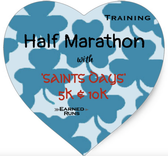 'SAINTS DAYS' Training sticker. All rights reserved. 'SAINTS DAYS' Training sticker. All rights reserved. WEEK 2 ‘SAINTS DAYS’ TRAINING PLAN STARTS TODAY. This is the week you start to pick up the mileage a bit. Although it seems you are expected to run 10-minute miles, "run 35 min or 3.5 miles" translates mathematically to running 1 mile in 10 minutes, you can run at a slower or faster pace. Be sure to cover the scheduled mile distance, which will then extend over a longer time period. Of course, if you are able to run at a comfortably faster pace, you will finish in less time. There are no speed drills in this part of plan, so the mid-week runs are intended to be easy. If you would like to try a simple progression run on a Tuesday or Thursday session, try going out easy and after you’ve covered half the distance, finish the second half a bit faster, so that you cover that same distance at in a shorter period of time. For example, if the initial 1.5 miles of a 3-mile run take 15 minutes, try to finish the next 1.5 miles in under 15 minutes. Think of it as mentally beginning to develop a race day strategy, even this early in training. There was a post (January 17, 2018) soon that detailed progression runs. The reason to complete the prescribed distance mid-week involves the long run at week's end, which will gradually increase in length. The goal of training is to be physically and mentally prepared to run the entire race. Thus, it will be "easier" over the duration of the 18-week plan to cover the full distance each running day, even if though it may require more time than listed is on the plan. GOOD LUCK! RUN & MOVE HAPPY! BROOKS SPORTS INC. CEO WANTS TO UNDERSTAND "NON-RUNNERS" WHO RUN! An item in Bloomberg.com's Businessweek section, which ran in early January, just after New Year’s Day, reveals what the less than gigantic running shoe manufacturer Brooks’ CEO defines as “not a runner”. "Why Brooks Needs Runners Who Hate to Run."
Author Clare Suddath seems to seriously consider, if not accept, the attitude and the demotion it is serving up to designated non-runners like herself. Possibly in a tongue-in-cheek, going-along- to-get-along manner, she relates to readers the perspective of Jim Weber. According to the article, Weber believes that professionals who compete in races for prizemoney are runners, and all the rest are “self-defined”, but not actually, runners. Furthermore, she quotes him as admitting, “running’s not really a sport.” The fact that “19 million Americans who participate in some kind of organized road race” annually “aren’t competing to win anything” is presented as supporting evidence of running’s non-sport status. Further explanation is offered that an additional 28 million regularly running (non-runners) don’t even race. Apparently, Weber is trying to understand WHY these 47 million non-runners run so they can persuade them to “drop $100 - $180 on a pair of shoes”. Suddath reports “the 104-year old Seattle-based company that makes running gear, and only running gear” and that Weber suspects the answer is personal. “The answer is almost always personal”; “when people run, they’re doing it for themselves,” opines the CEO. Insightful. The article, posted in a business magazine, mostly tells the confusing story of the Brooks company. How it survived various challenging times, ownership situations, and running trends to become a little known but top brand in specialty stores and with elite runners. Brooks was able to position itself in this niche by re-focusing and selling “high-end shoes designed for serious runners” with Weber’s leadership, the piece indicates. Now, it seems Weber wants Brooks to “become a $1 billion brand” by tapping into the sentiments of the people he deems non-runners in order to sell gear to “runners who don’t like to run”. The information about Brooks is quite detailed and historical. That It has survived all these years is remarkable. I recall that Greg Meyer, a famous star distance runner from my hometown and high school, who won the 1983 Boston Marathon among other famous races, worked at Brooks for more than a decade when it was owned by Wolverine World Wide. I exclusively bought this brand of shoes for years because they worked for me, because of Meyer’s association, and because it seemed to be the shoe for the ‘every-man/-woman’ runner like me. The Earned Runs sign-off message was inadvertently the same as Brooks, “RUN HAPPY!” until 2018. Is it true that Brooks doesn’t see non-professionals as real runners? The footwear manufacturer’s website doesn’t seem to share the perspective described in the Bloomberg story. It highlights inspirational coaches, company charity efforts, and its aims to help all people live healthy lives through running. To me it still seems to be the shoe for every-person, not elites only. If Brooks wishes to understand why people run without entering races, compete without promised prizes, and want to think of themselves as real runners (walkers, obstacle course competitors, triathletes, etc) , Earned Runs might be able to provide insights that help with future marketing campaigns. Why do you run? Walk? Challenge yourself athletically? Do you hate it? RUN & MOVE HAPPY! https://www.bloomberg.com/news/features/2018-01-03/why-brooks-needs-runners-who-hate-to-run https://www.runnersworld.com/elite-runners/greg-meyer http://footwearnews.com/2014/business/news/milestone-brooks-looks-back-at-100-years-143799/ WHY BREATHING IN COLD AIR HURTS
This week the topic is a fun one, not requiring explanation or interpretation of research. The Weather Channel often presents brief science lessons related to weather. Most who keep this TV cable channel on for long stretches of time, like background music, love these education breaks. It’s why we watch so devotedly. This week there was an item about why outdoor exercisers might sometimes complain that breathing cold air hurts. Why a burning sensation might be felt in the throat and chest. Later in the day when I searched the TWC website for a video or mention of this particular lesson, to use it for this post, it could not be located. An internet search explained why. It turns out the TWC staff have a website on which to post stories like this! Who knew? It is www.weloveweather.tv. The explanation is simple; it’s the dryness not the cold. Inspired air must be at body temperature and 100% humidity by the time it reaches the lungs. After passing through the nasal passages (nose) and oral cavity (mouth) it reaches the trachea. Since winter air is extremely dry, cells lining this tubular structure are tasked with using their own moisture to raise air humidity levels to 100% and temperature to 98.6 degrees. This process can leave tracheal tissues dehydrated and irritated. Especially when lots of air is moved into the respiratory tract very quickly. Remedies: Stop running or being active outdoors in cold weather (not an option for many) Wear a mask or scarf covering the mouth to pre-warm/moisten air before it enters the body Breathe through your nose, it’s large surface area is better at warming than the trachea Stay hydrated to give your tissues every chance to do their work Weather lovers not only have an explanation for a physical reaction to frigid temps but they may now have more weather channel information available. RUN & MOVE HAPPY! https://weloveweather.tv/breathing-cold-air-hurts/ NOW IS THE TIME TO FIND AND FIX ASYMMETRIES Ashley Mateo asks, “How Symmetrical Are You?” in an article for Runnersworld.com and provides 6 moves to functionally test this physical quality. In a related linked article, “Six Moves to Improve Symmetry”, she provides 6 exercises to help fix problems that may have been identified. A third article explains asymmetry and why correcting issues in this area are important to running efficiency for top performance and, most importantly, to avoiding injury.
One of the experts quoted in the third article, Lance Walker at Michael Johnson Performance training centers, discusses how not correcting inequalities “in strength, stability, mobility, flexibility, and balance means asymmetries are just going to expose themselves at the worst possible time, leading to less than optimum performance”. Under “extreme circumstances”, like a long-distance endurance race, problems will surface. To some this could be a slower-than-hoped-for time. For others, asymmetries can manifest as pain even before the race, especially in the later stages of a training plan when weekly miles increase and speed workouts are scheduled. I’m speaking from personal experience in this regard. Pain and injury arising from asymmetries have prevented my participation in running events at several times throughout my running career. I know this because the moves in the tests have been used to diagnose my problems. And the exercises, or others very similar to them, have been prescribed by physical therapists at these times. Hard work and perseverance was required to heal and resume running. I resolved each time to maintain ‘symmetry’, or as close as I was able to get to this state of perfection. Eventually in each injury–rehab cycle my attention to this kind of work dropped off. It was, and still is, more satisfying mentally and physically to work at exercises that I do well, than those that are difficult because they address deficiencies. I read this string of articles with a bit of dread. Then more dread as I prepared to test myself. The results weren’t completely horrible. But I do have weaknesses and asymmetries that require attention. The focused work I’ve done on strength lately has helped. That feels good. From experience, I know that although it’s difficult and time consuming to correct deficiencies, spending 2-3 weeks on the recommended exercises and my old PT regimen should result in some progress. Enough progress to inspire continued and concentrated work. Winter is a good time for indoor rehabilitation. Soon enough softer spring weather will present an irresistible lure to enjoy exercise outdoors. That’s the message I hope you receive in this post. Now, not later, is a great time for a reality check. Test yourself for symmetry then do the work to correct problems. Before the important race, before your training plan gets tough. If you cannot perform the move at all, don’t be discouraged. I’ve been there, and likely so have many others. You may need to cycle through this process every so often, but you’ll have company. None of us is perfectly symmetrical. The third article, “How Symmetry Can Make You a Better Runner” indicates that runners in particular are prone to injury, and “a lot of that has to do with not properly fixing muscular imbalances.” Mateo has helpfully lined up a test, the fix, and an explanation of the problem. RUN & MOVE HAPPY! https://www.runnersworld.com/injury-prevention/symmetry-test https://www.runnersworld.com/injury-prevention/symmetry https://www.runnersworld.com/injury-prevention/symmetry-workout Matt Fitzgerald explains and describes several different types of progression runs that he recommends to runners who wish to increase speed in “Want to Get Faster? Add These to Your Weekly Schedule” for ACTIVE.com. His slideshow article provides runners with coaching on how and when to incorporate each one into weekly training schedules.
The simplest is the fast-finish progression run, which may be appropriate for those training with the Earned Runs HALF MARATHON WITH ‘SAINTS DAYS’ 5K& 10K beginner plan. This progression run takes advantage of a normal impulse to hurry home. I use it frequently whether running or walking. It involves finishing the second half of the planned distance in a shorter period of time than the first half. For example, if the initial 1.5 miles of a 3-mile workout is covered in 15 minutes, the next 1.5 miles would finished in under 15 minutes. The threshold progression run requires a pace that a runner determines by running at a fast pace for 60 minutes, so it’s for those who have experience. The “threshold” portion, Fitzgerald says, is run at “’lactate-threshold pace’ (or the fastest pace you could sustain for one hour in race circumstances)”. It might be a progression run for those preparing for a marathon or half marathon” The marathon pace progression run benefits runners preparing for any distance race but is used differently depending on the specific distance, 5k, 10K, half marathon or marathon. The specifics are covered in the slideshow. Fitzgerald is an expert. If you’re interested in these speed workouts, definitely read the article and perhaps other training information he has written on the topic. Save it for later if you don’t think you need it now. RUN & MOVE HAPPY! https://www.active.com/running/articles/want-to-get-faster-add-these-runs-to-your-weekly-schedule |
BRIDGE TO PHYSICAL SELF
Running, walking, and fitness activities enable us to experience our physical selves in a world mostly accessed through use of fingers on a mobile device. AuthorEARNED RUNS is edited and authored by me, runner and founder. In 1978 I began participating in 10K road races before 5Ks were common. I've been a dietitian, practiced and taught clinical pathology, and been involved with research that utilized pathology. I am fascinated with understanding the origins of disease as well as health and longevity. Archives
November 2023
CategoriesNew! Search Box
Earned Runs is now searchable! Check it out...
|



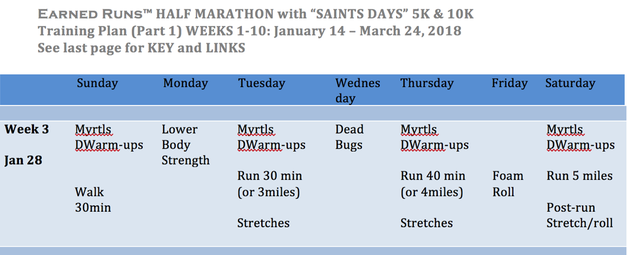
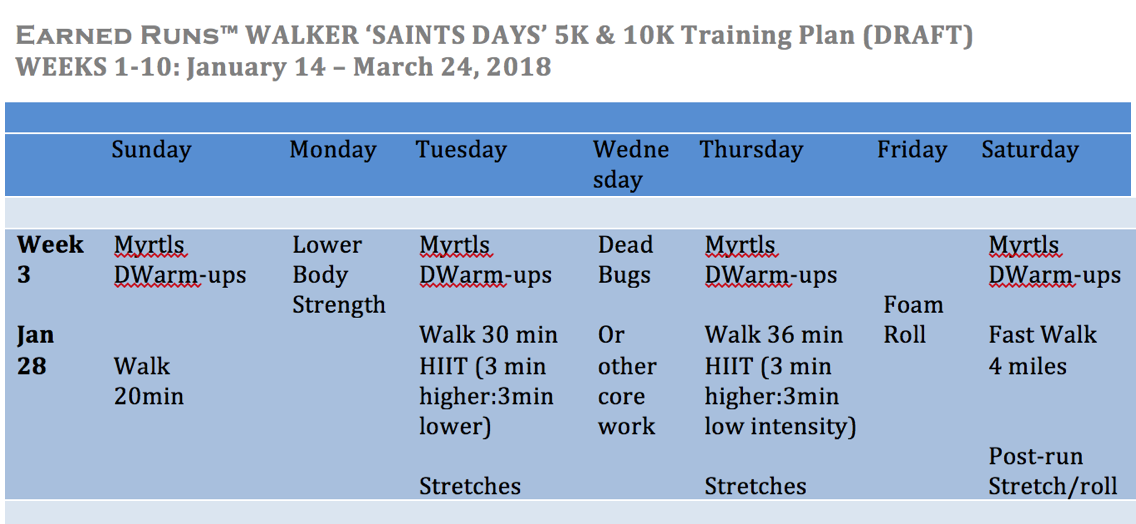
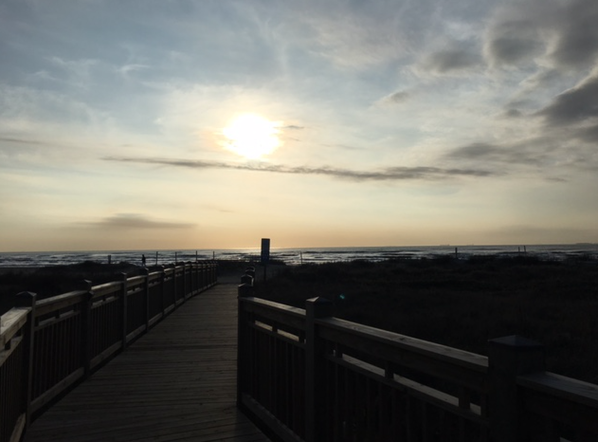
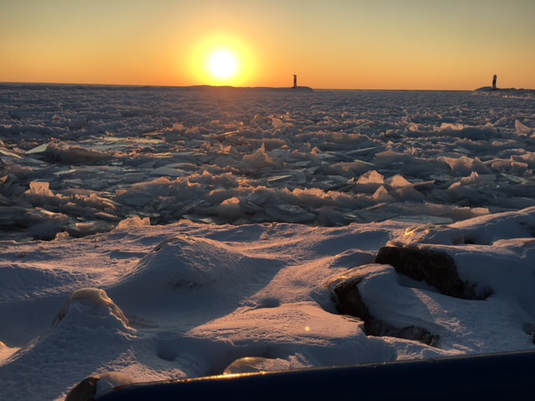
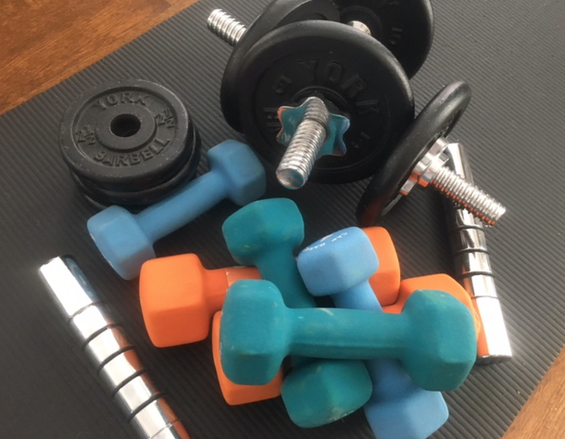

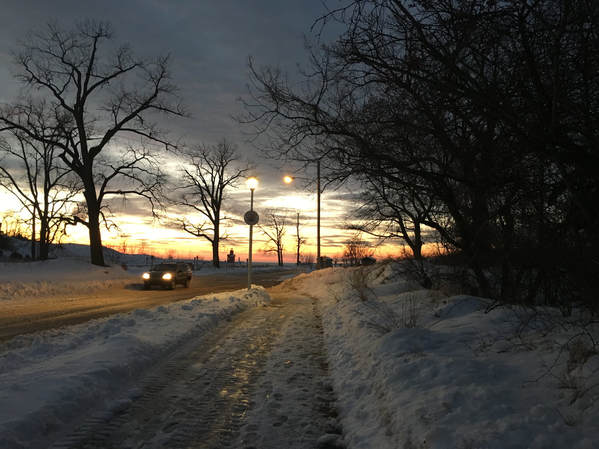

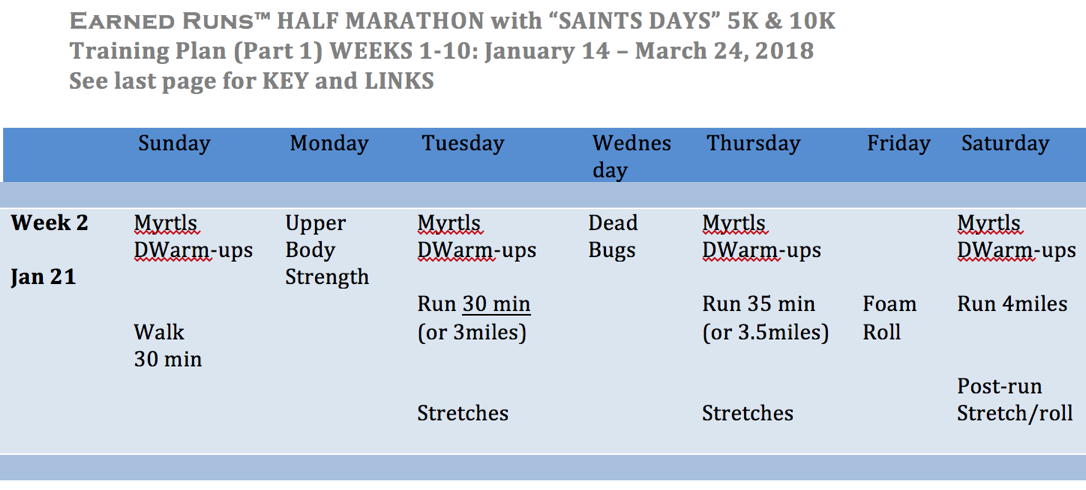
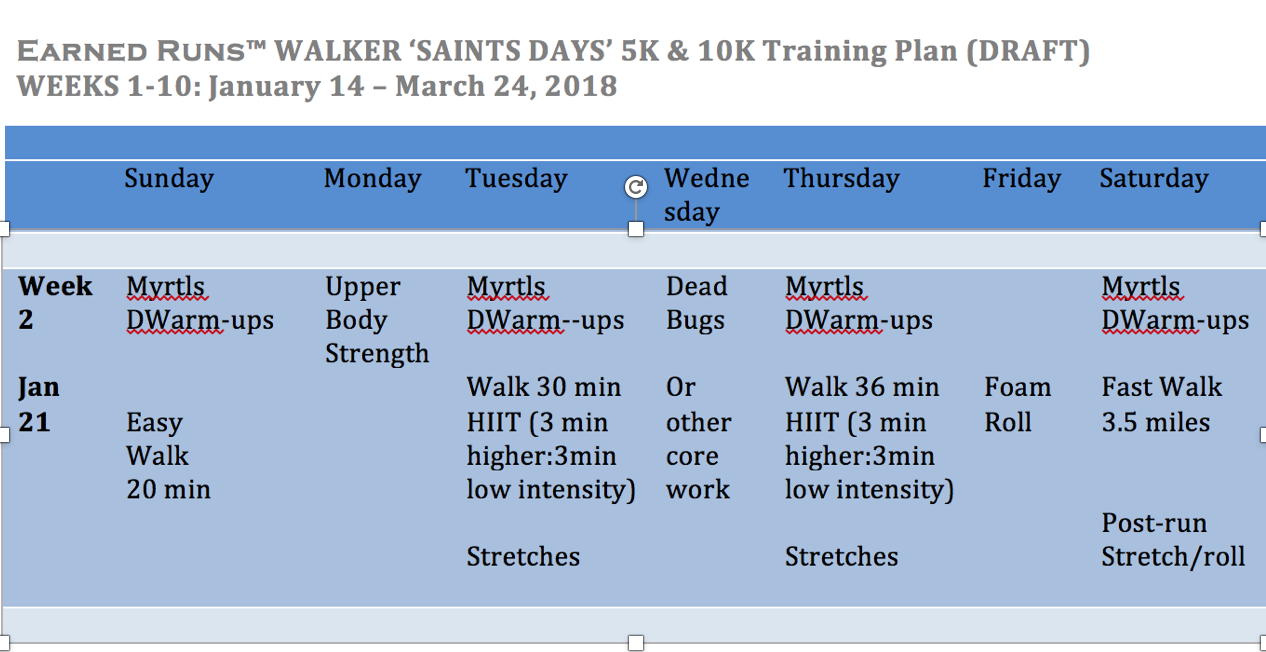
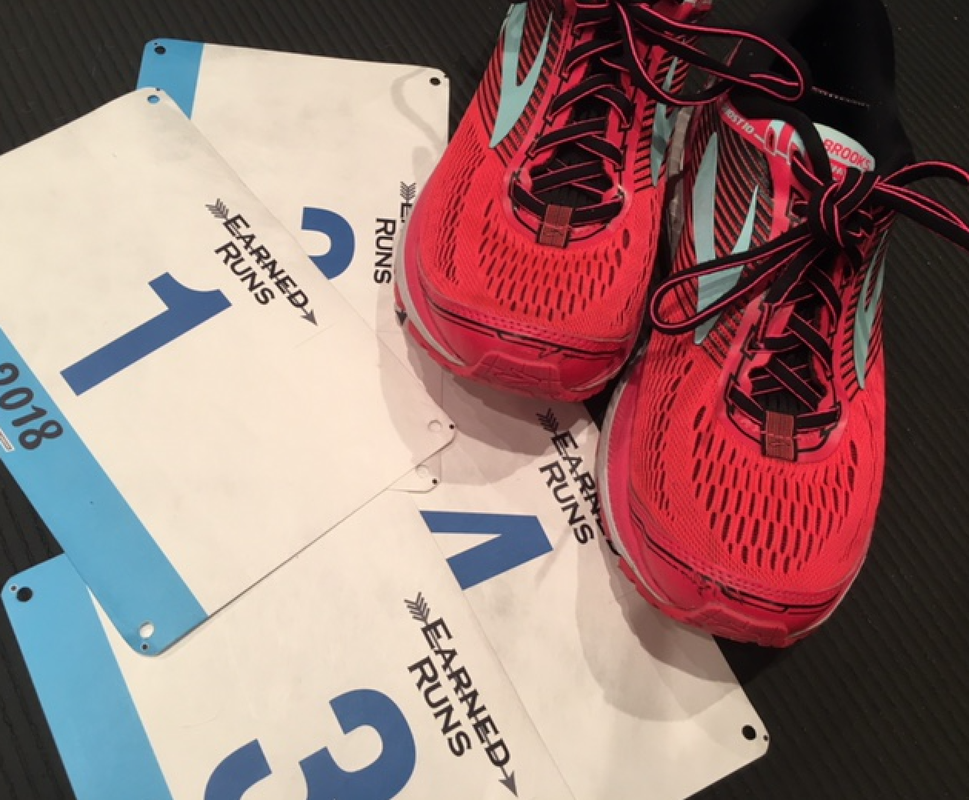

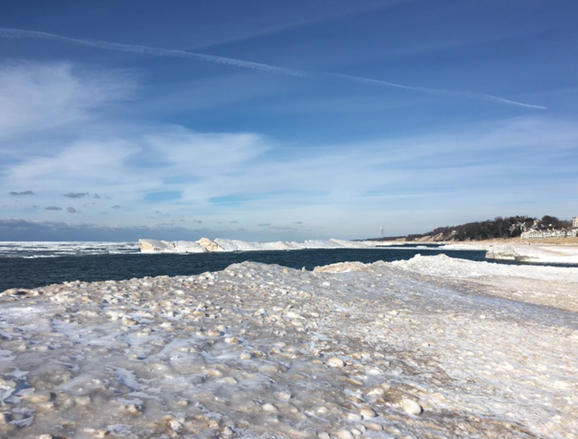
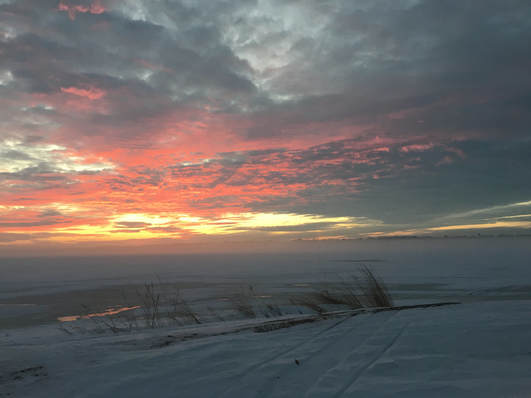
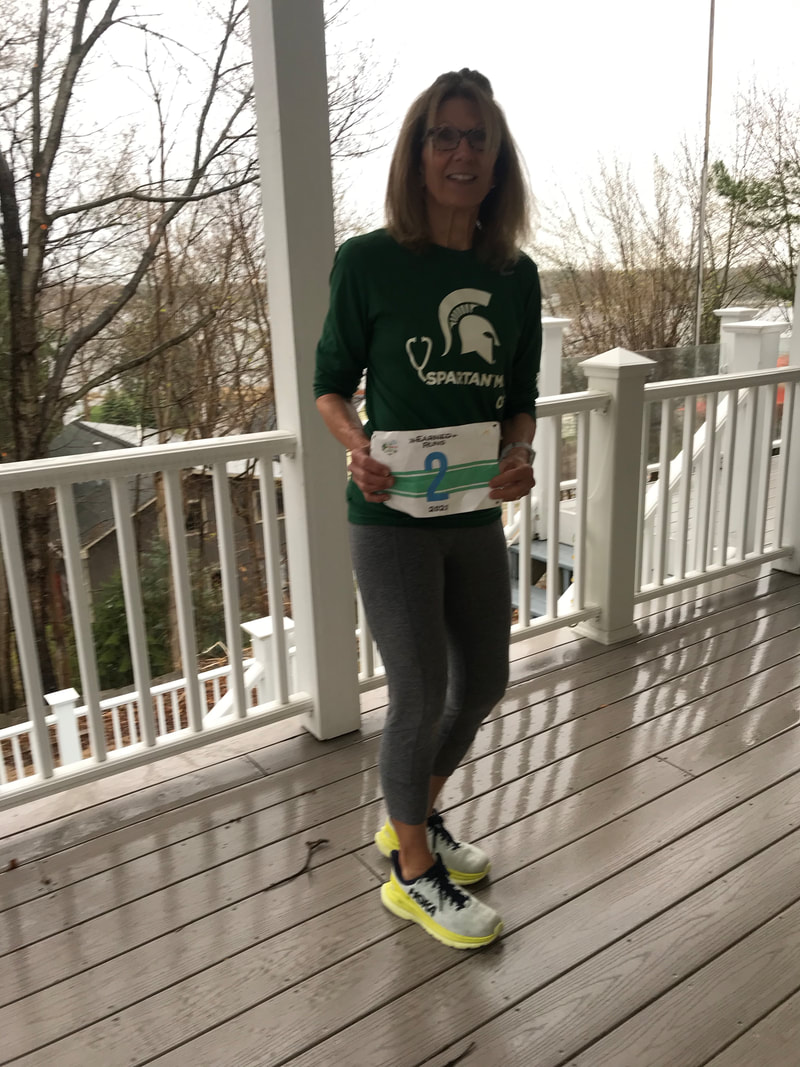
 RSS Feed
RSS Feed